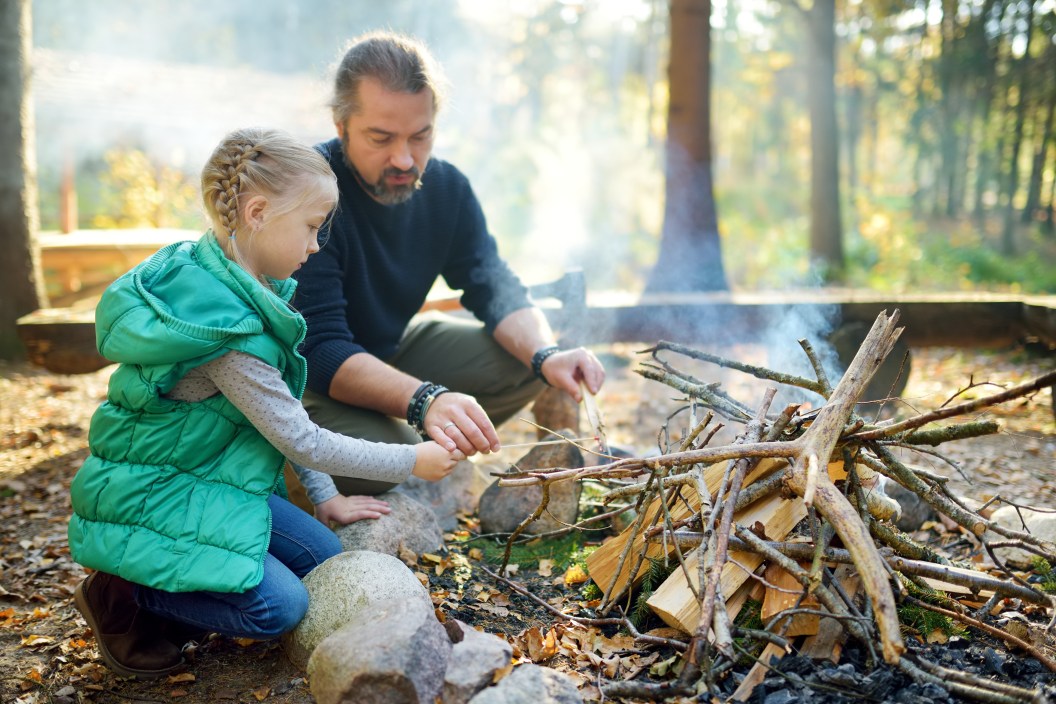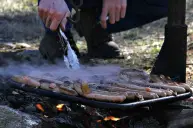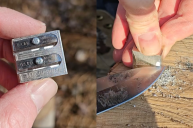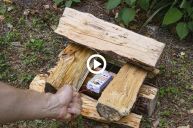Knowing how to build a fire is an essential skill for every camper and outdoorsperson. Whether you want to keep warm after the sun goes down, just roast some marshmallows, or you need a fire for survival purposes, fire-starting know-how comes in handy in all sorts of outdoor scenarios
I like to practice this survival skill every time I go camping, whether I'm hunting, fishing, or just spending a weekend with friends. Whether you've got a fire pit and fire starters, or want to try starting a fire with just sticks, you're honing the skills to stay warm out there.
Thankfully, learning how to start a fire is easy—if you follow these steps.
Research Regional Fire Rules
Before you get to your campsite, check whether it's legal to start a fire in the first place, as some regions and states may implement fire restrictions during the hot and dry seasons. Depending on the restriction, fires may only be allowed in specific areas or banned altogether.
This is becoming more common in regions throughout the West, such as Colorado. As the summers become hotter, the state bans fires during certain periods to decrease the threat of catastrophic wildfires. In fact, across the U.S., nearly 85 percent of wildfires are started by people, according to the National Park Service.
Once you've determined that building a fire is legal in your location, check whether you can bring your own firewood or can collect firewood locally.
Gather Tinder, Kindling, and Firewood
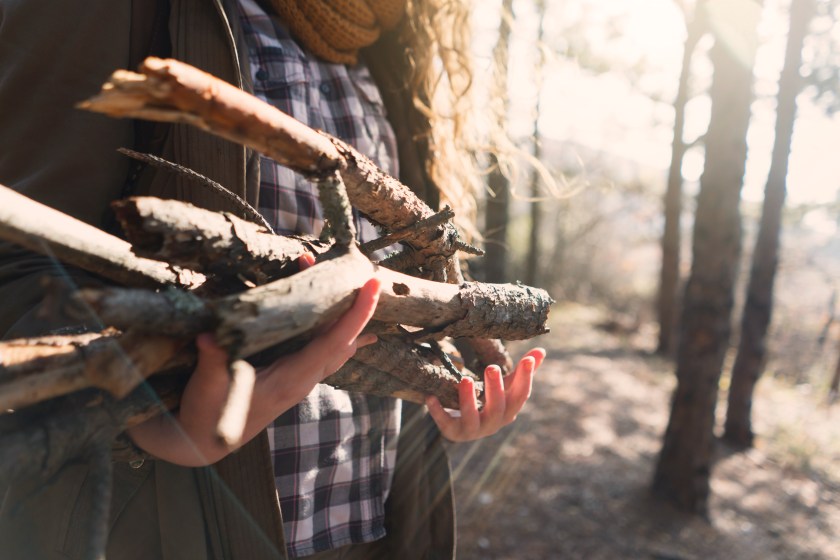
Getty Images, SrdjanPav
Before you light a fire, make sure you're familiar with basic campfire safety, and have something to extinguish the fire.
You'll also need a few different types of fuels:
- Fast-burning fire starters to use as tinder, such as dry grass, birch bark or pine needles, or even household items like cotton balls and dryer lint.
- Twigs and other small sticks to use as kindling to build the flames.
- Large logs or branches to increase the size of your fire and keep it burning once it's started.
How to Start a Fire in a Fire Pit
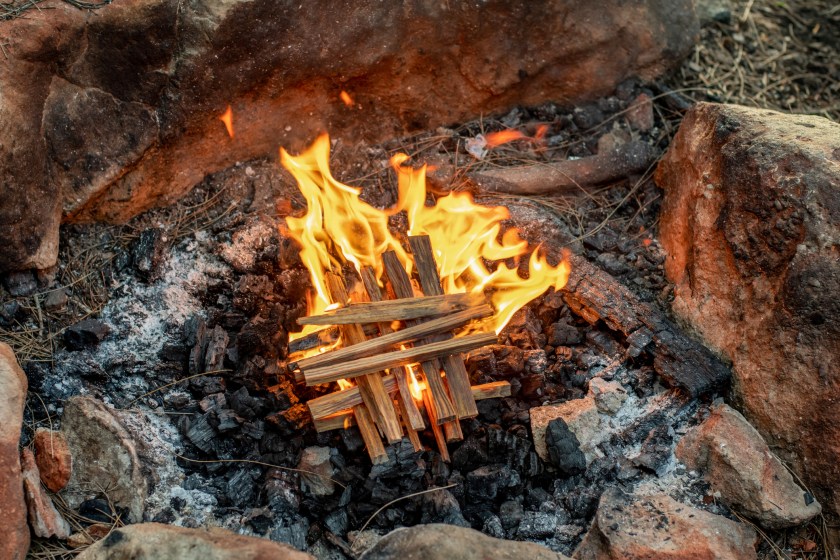
Getty Images, aria Nipot
To start a fire in a fire pit, first assemble the supplies you'll need: matches, lighters, paper, wood shavings, smaller pieces of wood to use as kindling, and larger pieces of dry wood, or whatever versions of these you have on hand.
Next, you'll need to decide how to arrange them in your fire pit. Two tried-and-true methods for starting a fire in a fire pit are the teepee and log cabin methods.
The teepee method is handy when you're looking to start a fire quickly. First, assemble your tinder in the center of your fire pit. This could be a loose clump of dried grass, pine needles, newspaper, cardboard, or even an old (and empty!) bird's nest. Next, add your kindling to the pile in a circle around your tinder. Small pieces of wood, twigs, and finely split firewood make great kindling. It should come together in a circular teepee shape, with the twig tips leaning in on each other at the top. Then, light your fire starter in the center.
After your fire starter is lit, continue to add kindling to the teepee as the flames grow. Once you have a solid base burning, it's time to add larger logs. But keep in mind that if you add too many too quickly or too close together, you'll overwhelm your fire and starve it of oxygen, causing it to go out. Maintain a good balance of adequate airflow and adequate fuel to keep your fire going.
The log cabin method is best when you need a bed of coals for cooking food. To build up a log cabin fire, lay two large pieces of firewood parallel to each other, about a foot apart. Then, lay two more pieces of firewood perpendicularly on top of your base logs. This is where the "log cabin" gets its name; this crisscrossed structure resembles a log cabin.
Next, start a teepee fire within the cabin frame. As the teepee fire ignites the stacked logs, continue to stack logs on top of each other in a square fashion. This will keep your log-cabin-style fire burning while providing hot coals in the center and a solid, square base to cook food over.
How to Start a Fire with a Fire Starter
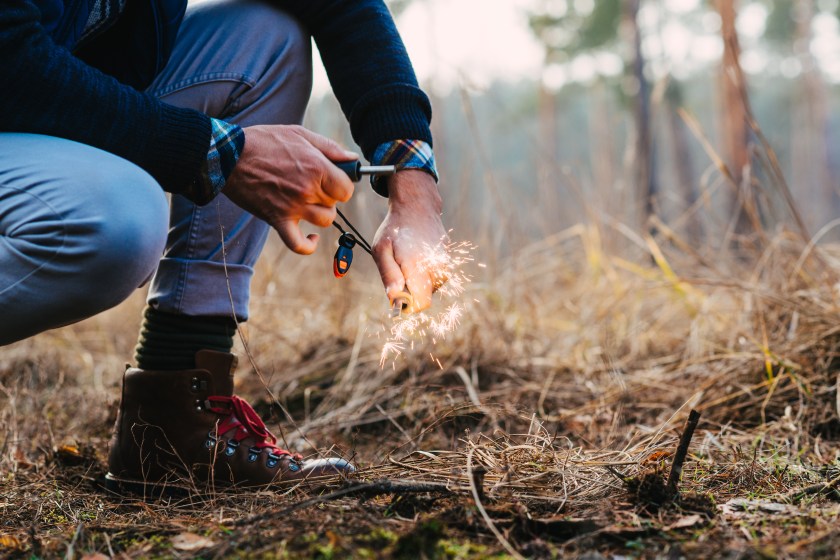
Getty Images, Thomas_Zsebok_Images
Using a fire starter is arguably one of the easiest ways to ignite some flames. You can buy fire starters at any outdoor store or big box retailer such as Walmart. Generally, fire starters do one thing: They get your fire started. Some are made of flint and steel. Some come with an igniter, and some don't.
Fuel-based fire starters are a good choice if you're car camping. Items such as lighters and propane torches fall into this category. While they can be a bit bulky, having the ability to quickly and easily start a fire is super handy when weight and size aren't an issue.
Spark-based fire starters are great if you're backpacking or looking for a more compact way to start a fire. Flint-and-steel striker sticks and other spark-producing tools are lightweight options that work well.
Fire starters without an igniter simply replace natural tinder as long-burning, easy-to-light fuel. Such products include fire paste, flammable pucks, artificial tinder, resin-filled sticks, and balls of shredded wood. All of these light quickly and easily, even in inclement weather. Plus, they save you the trouble of collecting tinder yourself.
Purchased fire starters are great to have on hand, especially if you're expecting to deal with wet weather conditions—and wet natural tinder—in the backcountry. It's also a good idea to have some stashed away in your camping or survival kit for emergencies.
How to Start a Fire with Sticks (Bow Drill Method)
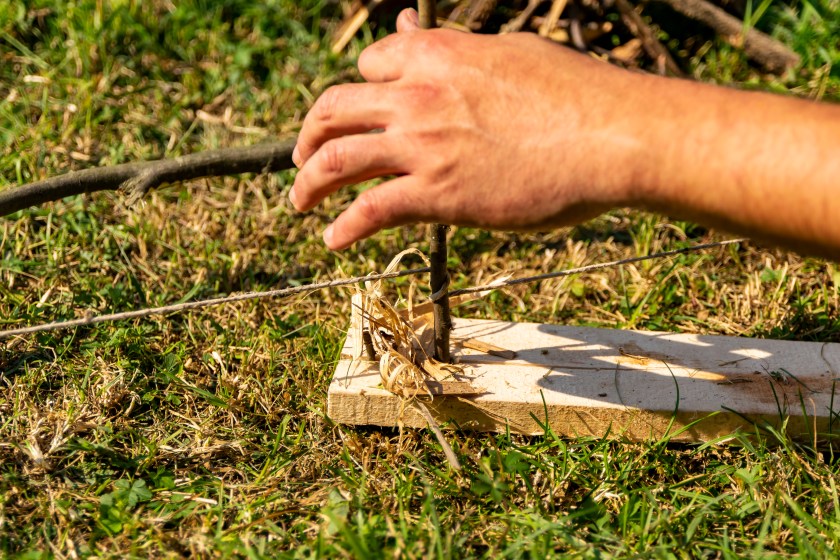
Getty Images, Nicki1982
Starting a fire with sticks—aka a friction fire—can be challenging and takes time, but it's great to know how it's done in a pinch. If you can light a friction fire, you'll be able to light a fire even if you don't have matches, lighters, or other ignitors.
To light a fire with sticks, first identify a good place to make your fire. This should be bare ground at least 6 feet away from any shrubs, bushes, or grasses so they don't catch fire. Clear away vegetation or dig a small hole to create a bare spot on the ground if you must.
Next, gather your tinder and kindling. In a survival situation, this includes dry grass, dry leaves, tree bark, pine cones, twigs, sticks, or other flammable items around you that will easily light on fire. Once you've found tinder and kindling, look around for larger logs, thick branches, or other fuels that will burn for a long time and keep your fire going.
Bow Drill Technique
The bow drill method, also known as a fire drill, is one of the most common ways to start a fire with sticks. You'll need:
- A knife or small saw
- A hatchet
- A cord, such as a thin rope, shoelace, or grapevine about 2 feet long
To get started, forage for items to make your bow drill. They include:
- A very straight, sturdy hardwood stick
- A bow stick: a 1-inch diameter, sturdy, flexible green stick with a natural fork at one end
- A fireboard: a soft, flat, wooden board
- Tinder, kindling, and fuel for your fire
Once you have collected this list of natural supplies, use your hatchet or saw to cut your straight stick into a 1-foot-long piece. Remove any bark on your straight stick with your knife. Then, use your knife to carve one end into a point and the other end into a short, shallow point.
After you've made your straight stick, use your hatchet or saw again to cut your bow stick to about 20 inches long. After you cut your bow stick to length, use your hatchet or saw to cut your fireboard into a 6-inch-long, 1-foot-wide board. Use your knife to carve a shallow indentation into the center of your fireboard. This is where you'll "drill."
Tie your cord to both ends of your bow stick. There should be a little bit of slack left in your cord. Then, hold your straight stick with the shallow point down perpendicularly into the dent in your fireboard. Wrap your bowstring cord once around your drill, and "saw" the bow back and forth to spin the drill quickly into the fireboard with even, long pulls.
The friction of the drill point on the fireboard should begin to make the wood smolder. After a few minutes, look for the bottom of your hand drill to be charred. Black, smoky powder should be building up in the fireboard and beginning to glow—this is an ember. With your knife, carve a triangular notch whose tip points into your black circle on your fireboard. Then, use the notch to gently slide your ember immediately onto your dry, natural tinder material. Add more tinder as necessary, blowing gently on your ember until you see flames. Add more tinder, then kindling and finally fuel using the teepee or log cabin method. This method takes time and a lot of practice.
